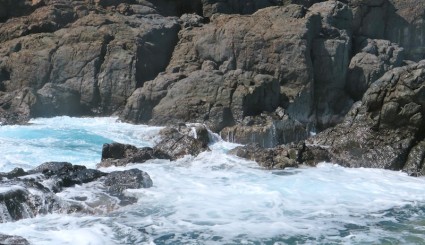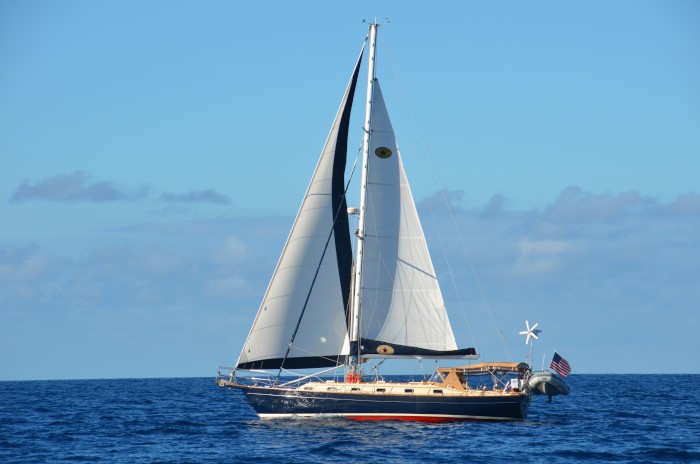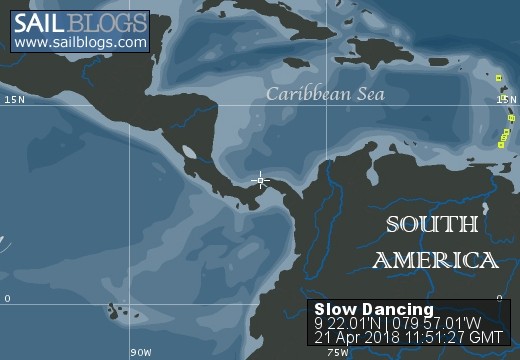
Slow Dancing
18 January 2020 | Rio Dulce, Izabal, Guatemala
08 November 2019 | Catamaran Marina Rio Dulce, Izabal, Guatemala
08 November 2019 | Catamaran Marina Rio Dulce, Izabal, Guatemala
08 November 2019 | Catamaran Marina Rio Dulce, Izabal, Guatemala
08 November 2019 | Catamaran Marina Rio Dulce, Izabal, Guatemala
08 November 2019 | Catamaran Marina, Rio Dulce, Izabal, Guatemala
08 November 2019 | Catamaran Marina, Rio Dulce, Izabal, Guatemala
06 October 2019 | Catamaran Marina Izabal, Guatemala
06 October 2019 | Catamaran Marina Izabal, Guatemala
06 October 2019 | Catamaran Marina Izabal, Guatemala
06 October 2019 | Catamaran Marina Izabal, Guatemala
06 October 2019 | Catamaran Marina Izabal, Guatemala
06 October 2019 | Catamaran Marina Izabal, Guatemala
06 October 2019 | Catamaran Marina Izabal, Guatemala
06 October 2019 | Catamaran Marina Izabal, Guatemala
01 October 2019 | Dream Catcher Eco Lodge Rio Dulce, Izabal
29 September 2019 | Catamaran Marina, Guatemala
29 September 2019 | Catamaran Marina, Guatemala
29 September 2019 | Catamaran Marina, Guatemala
29 September 2019 | Catamaran Marina, Guatemala
Remembering the Spanish Virgin Islands
01 March 2015 | USVI
Melissa Mostly sunny & windy

February 14-25, 2015
There are probably more than three named Spanish Virgins however; we planned to cruise Vieques, Culebra and Culebrita with our friends Bob and Virginia. We anchored at Esperanza, Vieques. The welcome dinghy operated by Chase gave us the lowdown on the dinghy dock and the local fishermen. We overlooked the malecon (boardwalk), watched local fishermen and hailed other cruisers. Esperanza has bars, restaurants and boutiques to entice day-trippers from Puerto Rico and cruisers to part with their money. One man rode his horse back and forth along the street. Go figure. The beachfront was charming at night. We gathered a lot of useful information from the Richard and Jan on Morpheus of London at Lazy Jacks, the cruisers bar. English became a foreign language when Morpheus and the “other” Brits, Kym and Mick on Phylis, talked.
No trip to the Caribbean is complete without lost luggage. On our taxi ride to recover Bob’s lost luggage, we toured Isabel II. It is the larger of the two cities on Vieques. While riding over the mountains, we saw many horses grazing along the roadside. There is evidence of former US Naval facilities abandoned and rusting. The US Military took possession of about 70% of Vieques in 1941, to use as a gunnery and bombing range. Signs were posted near our anchorage at Puerto Ferro prohibiting beach access. I guess the Navy decided it would not be politically correct if someone stepped on an unexploded shell. Vieques is known for its bioluminescent bays. We delighted in running our hands through the water bioluminescent plankton causing big bubbles of white light.
We pulled anchor and sailed, yes sailed, to Culebra. Bob trimmed the sails while Virginia captained the boat. Virginia loved being at the helm! As we approached, we felt like we had returned to the Bahamas. The anchorages were full of vessels from all over the world. We hailed cruisers and were hailed by other cruisers. Steve, on Slow Flight, finally caught up with us. Our happy hours at the Dinghy Dock Restaurant and Mamacita’s were full of sailing tales.
Culebra is a wonderful island. The beaches, snorkeling and hillsides offer a variety of scenery. The small community has a well-stocked grocery—for the islands—with a butcher.
There is a small historical museum (in a stone military houses of the 1940s) at Culebra with a few artifacts. By far, the most interesting exhibits at this museum were the video oral histories. The historical society interviewed residents of Culebra who shared the history of the island. The US Navy forced residents to relocate the town in 1901 when it designated land on Culebra as a gunnery range. When the Navy increased live target practice in 1941, most residents were forced to relocate. Residents of Culebra who relocated to New York campaigned publically for an end to the bombing of the island. Everyone united—all 500 residents. They turned themselves into human targets in order to get the bombs to stop. In 1975, the Navy stopped bombing Culebra, but not Vieques. Bombing continued on Vieques until 2003. One senses that the natives of the Spanish Virgin Islands resent the United States destruction of their reefs, farms, communities and islands.
Culebra boasts that Flamenco Beach is one of the world’s top ten. It is about a mile long with turquoise waters. At the north end there are two brightly painted tanks from the days of bombing practice. Dan and I decided that we have seen nicer beaches. Our Culebrita beach anchorage was beautiful. The sand glistened white in the moonlight. The sun made the turquoise water sparkle. The turtles and coconut palms formed a “Caribbean Paradise” postcard.
Culebrita is the smallest named Spanish Virgin and is uninhabited. We hiked to the Jacuzzi across round pebbles, over huge rocks and through mosquitoes waiting for blood. What fun—the waves crashed over the boulders and bubbled around us. Culebrita has an abandoned lighthouse that has suffered years of decay. We hiked across the island, up and down hills in sun and shade, and dodging the hermit crabs and goat droppings. The lighthouse suffered heavy damage in Hurricane Hugo and later Hurricane Marilyn. The bricks looked sand blasted. The lighthouse is 300+ feet above sea level and it was hard to imagine the force of the winds being so strong at that elevation. The views were spectacular.
Today much of Vieques, Culebra and Culebrita are protected parklands and national wildlife refuges. They are part of the Territory of Puerto Rico. The Department Natural Resources and Fish and Wildlife are charged with protecting much of the island habitats. The Navy is cleaning up unexploded ordnance. The islands remain relatively undeveloped and unvisited which adds to their charm. We had a wonderful time cruising the Spanish Virgins.
There are probably more than three named Spanish Virgins however; we planned to cruise Vieques, Culebra and Culebrita with our friends Bob and Virginia. We anchored at Esperanza, Vieques. The welcome dinghy operated by Chase gave us the lowdown on the dinghy dock and the local fishermen. We overlooked the malecon (boardwalk), watched local fishermen and hailed other cruisers. Esperanza has bars, restaurants and boutiques to entice day-trippers from Puerto Rico and cruisers to part with their money. One man rode his horse back and forth along the street. Go figure. The beachfront was charming at night. We gathered a lot of useful information from the Richard and Jan on Morpheus of London at Lazy Jacks, the cruisers bar. English became a foreign language when Morpheus and the “other” Brits, Kym and Mick on Phylis, talked.
No trip to the Caribbean is complete without lost luggage. On our taxi ride to recover Bob’s lost luggage, we toured Isabel II. It is the larger of the two cities on Vieques. While riding over the mountains, we saw many horses grazing along the roadside. There is evidence of former US Naval facilities abandoned and rusting. The US Military took possession of about 70% of Vieques in 1941, to use as a gunnery and bombing range. Signs were posted near our anchorage at Puerto Ferro prohibiting beach access. I guess the Navy decided it would not be politically correct if someone stepped on an unexploded shell. Vieques is known for its bioluminescent bays. We delighted in running our hands through the water bioluminescent plankton causing big bubbles of white light.
We pulled anchor and sailed, yes sailed, to Culebra. Bob trimmed the sails while Virginia captained the boat. Virginia loved being at the helm! As we approached, we felt like we had returned to the Bahamas. The anchorages were full of vessels from all over the world. We hailed cruisers and were hailed by other cruisers. Steve, on Slow Flight, finally caught up with us. Our happy hours at the Dinghy Dock Restaurant and Mamacita’s were full of sailing tales.
Culebra is a wonderful island. The beaches, snorkeling and hillsides offer a variety of scenery. The small community has a well-stocked grocery—for the islands—with a butcher.
There is a small historical museum (in a stone military houses of the 1940s) at Culebra with a few artifacts. By far, the most interesting exhibits at this museum were the video oral histories. The historical society interviewed residents of Culebra who shared the history of the island. The US Navy forced residents to relocate the town in 1901 when it designated land on Culebra as a gunnery range. When the Navy increased live target practice in 1941, most residents were forced to relocate. Residents of Culebra who relocated to New York campaigned publically for an end to the bombing of the island. Everyone united—all 500 residents. They turned themselves into human targets in order to get the bombs to stop. In 1975, the Navy stopped bombing Culebra, but not Vieques. Bombing continued on Vieques until 2003. One senses that the natives of the Spanish Virgin Islands resent the United States destruction of their reefs, farms, communities and islands.
Culebra boasts that Flamenco Beach is one of the world’s top ten. It is about a mile long with turquoise waters. At the north end there are two brightly painted tanks from the days of bombing practice. Dan and I decided that we have seen nicer beaches. Our Culebrita beach anchorage was beautiful. The sand glistened white in the moonlight. The sun made the turquoise water sparkle. The turtles and coconut palms formed a “Caribbean Paradise” postcard.
Culebrita is the smallest named Spanish Virgin and is uninhabited. We hiked to the Jacuzzi across round pebbles, over huge rocks and through mosquitoes waiting for blood. What fun—the waves crashed over the boulders and bubbled around us. Culebrita has an abandoned lighthouse that has suffered years of decay. We hiked across the island, up and down hills in sun and shade, and dodging the hermit crabs and goat droppings. The lighthouse suffered heavy damage in Hurricane Hugo and later Hurricane Marilyn. The bricks looked sand blasted. The lighthouse is 300+ feet above sea level and it was hard to imagine the force of the winds being so strong at that elevation. The views were spectacular.
Today much of Vieques, Culebra and Culebrita are protected parklands and national wildlife refuges. They are part of the Territory of Puerto Rico. The Department Natural Resources and Fish and Wildlife are charged with protecting much of the island habitats. The Navy is cleaning up unexploded ordnance. The islands remain relatively undeveloped and unvisited which adds to their charm. We had a wonderful time cruising the Spanish Virgins.
Comments
| Vessel Name: | Slow Dancing |
| Vessel Make/Model: | Island Packet 44 |
| Hailing Port: | Annapolis, MD |
| Crew: | Melissa and Dan Kenshalo |
| About: | We began sailing on Chesapeake in 2005. Seven years later we became full time cruisers. We have explored the Bahamas, Eastern Caribbean, Western Caribbean and Central America. Our journeys have been full of fun and laughter. |
Chronicles of Slow Dancing

Who: Melissa and Dan Kenshalo
Port: Annapolis, MD


